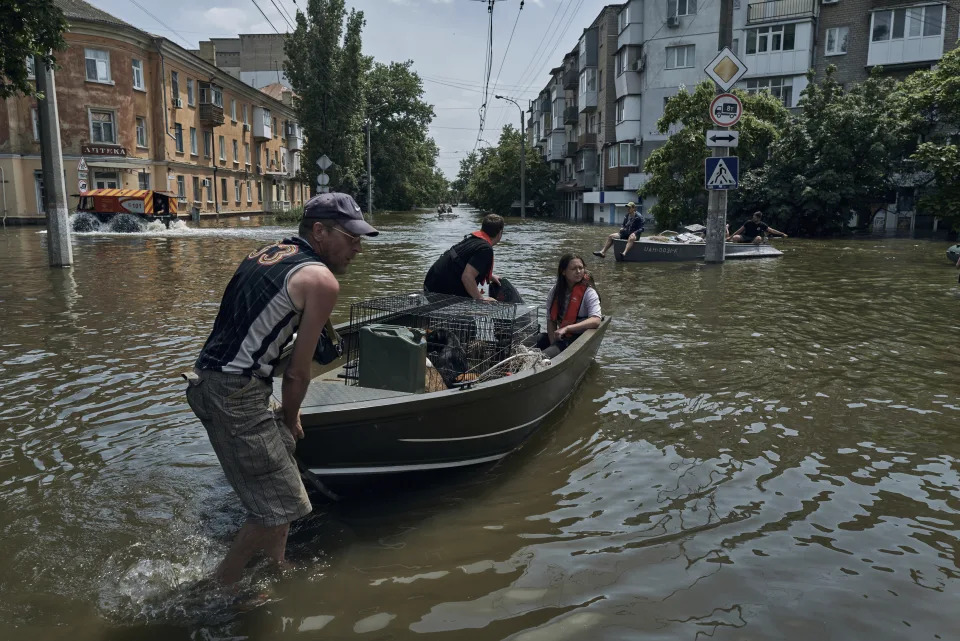HuffPost
Study Finds Heart Attacks May Affect Another Major Part Of Your Body Too
Jillian Wilson – June 14, 2023

The connection between your heart health and brain health is underscored in a recent study.
We know heart attacks can take an immediate toll on our cardiovascular system, and potentially a long-term toll as well. Now new research is highlighting another part of the body that may be affected: our brains.
An extensive study published in JAMA Neurology suggests a connection between heart attacks and cognitive decline. The data was drawn from six smaller studies that ran for various lengths of time, and followed a total of 30,465 people with no history of heart attack, stroke or dementia. Researchers assessed each person’s cognitive function by measuring memory, global cognition and executive function. They also evaluated these metrics after any heart attacks that occurred during each of the study periods.
Researchers followed up years after each of the original assessments, ranging from between 4.9 and 19.7 years later, depending on the length of the study. (The median follow-up time was 6.4 years.) In all, 1,033 participants across the six studies had heart attacks during the study’s timeline.
Researchers found that people who suffered a heart attack experienced a faster cognitive decline than those who did not. (All participants naturally experienced some form of lost brain function as they aged — but it only happened at a faster rate for those who’d had a heart attack.)
“The eventual decline in global cognition for those in the study who experienced a heart attack was equivalent to 6 to 13 years of cognitive aging,” Dr. Percy Griffin, director of scientific engagement at the Alzheimer’s Association, who was not involved in the study, told Medical News Today.
The connection between heart and brain health
“I think in this study there’s a clear heart-brain connection. And I think that connection in this particular study likely has to do through what we call vascular health,” said Dr. Daniel Muñoz, executive medical director and chief medical officer at Vanderbilt Heart & Vascular Institute in Nashville, Tennessee. “Medically, a healthy heart is one that has, among other things, healthy blood supply and healthy blood vessels.”
“Similarly, a healthy brain is one that has, among other things, a healthy blood supply and healthy blood vessels,” Muñoz said. “So, vascular health, or blood vessel health, connects all organs — in particular, the heart and the brain, right?”
In the case of a heart attack, blood flow to the heart is blocked by things like cholesterol and plaque. And the same can happen with the blood vessels that supply the brain with blood, Muñoz noted, which can cause cognitive problems.
“So, a heart attack may be a dramatic indication or a sign that vascular health, or blood vessel health, is not what we ideally would like it to be in that person,” Muñoz said, noting that a heart attack can put multiple parts of the body at risk.
Dr. Eric Adler, a cardiologist and medical director of heart transplant and mechanical circulatory support at UC San Diego Health, said the study’s findings also make sense when you consider inflammation.
Your body’s inflammation system is triggered after a heart attack, Adler said ― “and we know… there are biological mechanisms in which inflammation can affect cognitive function.”
In fact, according to one study, people with higher inflammation in the body had 7.8% more cognitive decline than those who did not have as much inflammation.
Adler said there are some new medicines for Alzheimer’s disease that target plaque buildup in the brain (which underscores Muñoz’s point above), and some ideas about inflammation’s effects on the condition.
“There are some thoughts about the inflammatory cells in the brain, which are called glial cells, and if those cells are contributing to Alzheimer’s, those cells may be triggered by heart attacks to be more active,” Adler said.
Adler noted there are many unknowns when it comes to Alzheimer’s disease, but there are potential connections between this study’s research and what is already in the medical zeitgeist.

Some amount of brain function loss is normal as you age, but new research suggests that people who have heart attacks experience this loss at a faster rate.
How to protect your heart and brain before or after a heart attack
All this is to say, you should work to better your heart and brain health.
“With regards to patients or our loved ones who experience a heart attack, I think this study suggests that they are vulnerable cognitively in the long run,” Muñoz said.
If you’ve had a heart attack (or a loved one has), and you’re concerned about accelerated cognitive decline, try not to worry too much. Instead, take this as a sign that you should work on your mental health in addition to your physical health.
“Doing what we can to support their mental health, to support their overall health, I think becomes really important to try to protect them from a vulnerability that may be there,” Muñoz said.
This could look like making sure a person’s medical needs are fully supported, like ensuring loved ones take their heart medication or setting a reminder each day if you’re taking medication yourself.
Additionally, it’s important to work your brain to keep it as sharp as possible. Studies show that crosswords and jigsaw puzzles can help challenge your brain, which can help slow mild cognitive decline.
“People aren’t doomed to this fate after a heart attack, but the study suggests that there’s a vulnerability there,” Muñoz said. “So, addressing that vulnerability head-on and working to support and protect patients who might otherwise be vulnerable, I think, could potentially do a lot of good.”
If you haven’t experienced a heart attack, keep taking steps to reduce your risk.
“For folks who have not had a heart attack, where the focus is on maintaining well-being and avoiding a heart attack… thanks to decades of research and better understanding, we know what the key tactics are for prevention,” Muñoz said.
“A healthy lifestyle ― which I think is a trifecta of healthy eating, exercise and, frankly, learning more about social engagement and lack of social isolation ― those kinds of things actually can be quite impactful on both your risk of heart attack and your risk of Alzheimer’s,” Adler said.
Additionally, maintaining healthy blood pressure is important, Muñoz explained. If you do have high blood pressure, make sure you manage it — whether through medicine or lifestyle changes, whatever your doctor says — so it stays in a healthy range. The same goes for cholesterol, Muñoz said.
“When [cholesterol is] abnormally high, that can accelerate the development of blood vessel disease everywhere, including in the heart, including in the brain, including other places,” Muñoz said. You should also stay away from tobacco products or, if you smoke, try to quit.
Adler stressed that it’s important to see your primary care doctor on a regular basis. They’ll help make sure your blood pressure is under control, along with your cholesterol, and will help figure out the best management tools for these things — and any other issues that could arise.
Seeing a doctor regularly, Adler noted, can help you catch any issues before it’s too late.













